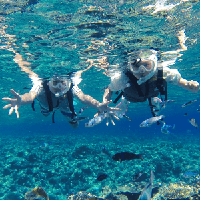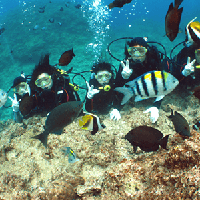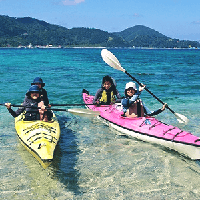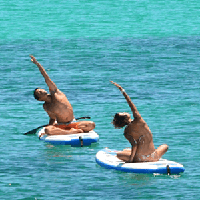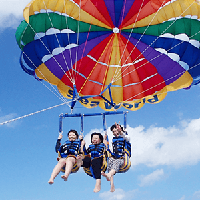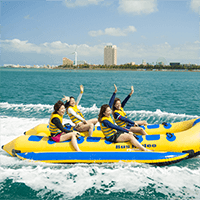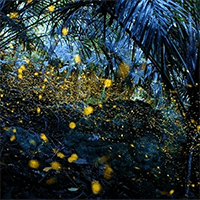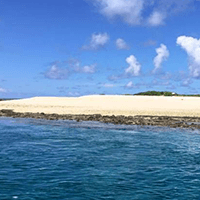Kansai in Guided tour
- Age 1~Age 70
- 4~5 hours
- 08:40 / 09:50
Dear customers, the following is a reference itinerary for that day (please note that the tour guide may adjust the order of the itinerary based on the actual situation on that day or remove the staying time of some attractions.) *Pre-travel notice: We will send you detailed tour guide and vehicle information by email between 20:00 and 21:00 the night before your trip, so please be sure to check it. Please note that the email may be mistakenly sorted into the trash can, so please check it carefully. During the busy tourist season, the sending of emails may be slightly delayed, so we hope you will understand. If you receive multiple emails due to special circumstances, please use the last email. Thank you for your understanding and cooperation. *One of the Three Views of Japan - Amanohashidate Observation Area "Amanohashidate", which floats in Miyazu Bay on the Sea of Japan, is known as one of the "Three Views of Japan" along with "Matsushima" and "Miyajima". The sandbar is 3.6 kilometers long, with pine trees planted along the coast and white sand beaches on both sides, like a bridge in the sky. If you climb to the observation deck of Mount Monju, you can look down as if you were a flying dragon, and it is called "Hiryu-kan". Ine Funaya - Venice City, Japan Visit the floating boathouse in Ine Village and experience the primitive ecological landscape. Interact with seagulls on a pleasure boat to Ine Bay. Pleasure boat tickets are at your own expense. *Cycling tour Complimentary bicycles are available for free use, making it convenient to explore the alleys and boathouses of Ine Village. Please note: Due to the long distance travel, the actual arrival time is greatly affected by traffic and weather factors. The above times are merely estimates. Please do not book activities for later itineraries on the same day. The operator is not responsible for any damages caused by delays.
- Age 1~Age 70
- 5~6 hours
- 07:20
Explore Japan's hidden gems: Ine Town, Amanohashidate, and Miyama Kayabuki Village *Ine Town - Known as the "Venice of Japan," you'll feel like you're in another world when you float by. One of the most beautiful villages and towns in Japan, this town has over 230 funaya houses lined up along the shores of Ine Bay, allowing you to feel the pristine scenery of nature. Stroll or bike through the picturesque streets and admire the crystal blue waters blending with the deep green mountains. At Funaya Hiyori, you can visit not only exquisite cafes but also real funaya houses. *Amanohashidate - Known as one of the "Three Views of Japan," Amanohashidate is a sandbar that looks like a bridge in the sky. Standing at the observation deck of Mount Monju, Amanohashidate looks like a dragon and overlooks this beautiful natural wonder. Don't forget to sign a fan at Chienji Temple to pray for academic success. You can also take a leisurely stroll along the beach to enjoy the fine white sand and cool seawater. Miyama Thatched Village - Experience the charm of ancient Japan and enter "Miyama Thatched Village" to feel the tranquility of the past. The thatched roof houses here are known as one of the three largest thatched roof houses still standing in Japan, and it feels like you've wandered into an isolated wonderland. Don't forget to try Miyama's milk soft serve at "Korofukuro" and check in at the red postbox that captures a moment in Miyama. This trip will allow you to appreciate Japan's most beautiful natural scenery and traditional culture, such as the tranquility of the boathouse on the water and the majestic view of the sandbar, and will leave you with unforgettable memories.
- Age 1~Age 70
- 5~6 hours
- 08:40 / 09:50
08:40 Boarding and disembarking at the meeting point, Nihonbashi Station Exit 2 (Namba-Shinsaibashi area)09:50 Boarding and disembarking at the meeting point, Kyoto Station Hachijo Exit (in front of Seven-Eleven)10:50 ▼MIHO MUSEUM - IM Pay's Shangri-La (free walk and free lunch / about 2.5 hours)13:50 ▼Kyu-Chikurin-in Temple - Reflections like Ruriko-in Temple (about 60 minutes)15:20 ▼Lake Biwa Shirahige Shrine Torii in the lake (about 40 minutes)16:00 ▼After a fun day of sightseeing, we start to return. 19:00 ▼Shinsaibashi, Dotonbori area (free time / about 1 hour)Guests can play in the Osaka Shinsaibashi area for about an hour. After playing, guests who have taken the course that gets on and off at the meeting point will disband in the Shinsaibashi area.
- Age 1~Age 70
- 5~6 hours
- 07:30
07:30-08:30: Pick-up/drop-off/transfer to hotel/private inn Hotels/private inns within the Osaka Loop Line 10:00 ▼ Kiyomizu-dera area (individual worship, free stroll, free lunch/approximately 3 hours) Recommended sightseeing course Course 1: Kiyomizu-dera (customer pays admission fee) - Ni-san-nen-zaka - Ishibe-koji - Gion·Hanami-koji-dori - Yasaka Shrine You can visit your favorite spots according to your stamina and time~Course 2: Kimono experience (Customers who are interested can wear a kimono and enjoy the old townscape and touring Kiyomizu-dera Temple. Let's take pictures of the wonderful moment.) (There are many kimono shops near Kiyomizu-dera Temple and Fushimi Inari Taisha Shrine. We recommend renting a kimono at a shop at Kiyomizu-dera Temple and returning it at a shop at Fushimi Inari Taisha Shrine. The fee is at the customer's expense.) 13:30 ▼ Fushimi Inari Taisha Shrine (individual visit and free stroll / about 70 minutes) 16:00 ▼ Nara Park (individual visit and free stroll / about 1.5 hours) "Deer and autumn leaves" interweave "Nara Park" The contrast between the autumn leaves and evergreen trees is vivid Recommended tourist spot [Todaiji Temple] (Admission fee is at the customer's expense.) Todaiji Temple was built during the Nara period. Nara is popular with tourists and once served as the capital of Japan. It is registered as a World Heritage Site as one of the "Cultural Monuments of Ancient Nara" by UNESCO. Todaiji Temple has eight national treasure buildings, 14 buildings with 24 national treasure Buddha statues, and nine other national treasures including paintings and books. The famous Great Buddha, the Great South Gate, the Kongorikishi statues, and the Hokkedo Hall, as well as the Buddha statues enshrined within, are all national treasures. There are very few places in Japan where you can see so many national treasures at once. Admission fee: Todaiji Temple Great Buddha Hall: 600 yen for adults (junior high school students and above), 300 yen for elementary school students; Great Buddha Hall and Todaiji Museum: 1000 yen for adults (junior high school students and above), 400 yen for elementary school students 17:30▼After a fun day of sightseeing, we start to head back. 18:30Shinsaibashi, Dotonbori area (Guests on the course that takes you to your hotel or guesthouse should wait for the shuttle bus. When the shuttle bus arrives, we will take you back to your hotel or guesthouse and the tour will end.)
- Age 1~Age 70
- 5~6 hours
- 08:40
Boarding and alighting at the meeting point 08:40 ▼Nihonbashi Station, Exit 2 (Namba-Shinsaibashi area) 07:30-08:30 ▼Pick up at hotel or guesthouse, hotel or guesthouse on the Osaka Loop Line 10:00 ▼Popular cat stationmaster -- Kishi Station (approx. 60 mins) 12:30 ▼Shirahama Toretore Market -- One of the largest seafood markets in western Japan (free time to stroll and have lunch / approx. 120 mins, food costs at the customer's expense) 14:45 ▼Senjojiki (approx. 30 mins) As its name suggests, Senjojiki is a large rock formation reminiscent of a wide rock formation. The white, soft rock jutting out from the tip of Setozaki toward the Pacific Ocean in a slope is a large rock formation made of sandstone formed 18 to 15 million years ago, and has been eroded by the rough waves crashing on the shore to create a magnificent landscape. The sunset sinking into the horizon is truly a "breathtaking view." 16:00 ▼ After enjoying the day's sightseeing, we start heading back. 18:30 ▼ Shinsaibashi, Dotonbori area (free time / about 1 hour) Guests can play in the Shinsaibashi area of Osaka for about an hour. Once you're done playing, the tour will end in the Shinsaibashi area. Guests who don't want to play can disband directly in the Shinsaibashi area.
- Age 1~Age 70
- 5~6 hours
- 08:40 / 09:50
Boarding and disembarking at the meeting point 08:40▼Nihonbashi Station Exit 2 (Namba-Shinsaibashi area) 09:50▼Kyoto Station Hachijo Exit (in front of 7-Eleven) 10:00▼Kiyomizu-dera area (individuals will visit the temple, stroll around freely, and have lunch at their leisure / approx. 3 hours) Recommended sightseeing course Course 1: Kiyomizu-dera Temple (customers are responsible for admission fees) - Ni-Sannenzaka - Ishibekoji - Gion·Hanamikoji-dori - Yasaka Shrine You can visit your favorite spots according to your stamina and time~Course 2: Kimono experience (Customers who are interested can wear a kimono and enjoy the old townscape and touring Kiyomizu-dera Temple. Let's take pictures of the wonderful moment.) (There are many kimono shops near Kiyomizu-dera Temple and Fushimi Inari Taisha Shrine. We recommend renting a kimono at a shop at Kiyomizu-dera Temple and returning it at a shop at Fushimi Inari Taisha Shrine. The fee is at the customer's expense.) 13:30 ▼ Fushimi Inari Taisha Shrine (individual visit and free stroll / about 70 minutes) 16:00 ▼ Nara Park (individual visit and free stroll / about 1.5 hours) "Deer and autumn leaves" interweave "Nara Park" The contrast between the autumn leaves and evergreen trees is vivid Recommended tourist spot [Todaiji Temple] (Admission fee is at the customer's expense.) Todaiji Temple was built during the Nara period. Nara is popular with tourists and once served as the capital of Japan. It is registered as a World Heritage Site as one of the "Cultural Monuments of Ancient Nara" by UNESCO. Todaiji Temple is home to eight national treasure buildings, 14 locations with 24 national treasure Buddha statues, and nine other national treasures including paintings and books. Famous sights such as the Great Buddha, the Great South Gate, and the Kongorikishi standing statues are all national treasures, as are the Hokkedo temple buildings and the Buddha statues enshrined within. There are very few places in Japan where you can see so many national treasures at once. Admission fees: Todaiji Temple Great Buddha Hall: Adults (junior high school students and above) 600 yen, elementary school students 300 yen; Great Buddha Hall and Todaiji Museum: Adults (junior high school students and above) 1000 yen, elementary school students 400 yen 17:30▼After a fun day of sightseeing, we start heading back. 18:30 Shinsaibashi, Dotonbori area (free time/approximately 1 hour)
- Age 20~Age 99
- 2~3 hours /3~4 hours
- 13:00
Blessed with an abundance of underground water veins that spring up from the Momoyama Hills, Fushimi was once called "Fushimizu" (literally "fushimizu" in Japanese), and it is said that full-scale brewing began here about 400 years ago because the water was suitable for sake brewing. It flourished as a castle town and a port on the Yodo River on the Tokaido, and sake breweries with white walls stand out along the Uji River and canals. The streets of Fushimi, where you can enjoy the atmosphere of a sake brewing town, with ten-koku boats sailing among swaying willows, have been designated as the "Fushimi Minamihama Neighborhood Landscape Development District" by Kyoto City. ~Time Schedule~13:00 [Meet at the north ticket gate of Keihan Electric Railway Nakashojima Station] Meet in front of the sake barrel object located immediately after exiting the north ticket gate! This is where the tour begins! It's a flat road, but you'll be walking about 2 kilometers, so please wear comfortable shoes on the day. 13:15 [Gekkeikan Okura Sake Museum] ☆Three types of sake tastings, including Daiginjo, and a special Gekkeikan sake cup included☆The building is a wooden storehouse built in the Meiji era that is still in use. You can drink the underground water used in sake brewing from the well in the courtyard. Just like Fushimi sake, it is very soft and delicious, so please try it. You will be surprised at how soft it is. In the exhibition room, you can see traditional sake brewing tools, which are designated as tangible folk cultural properties of Kyoto City. 13:50 [Fushimi Yume Hyakushu] ☆Winter limited sake ice cream included☆Shop & cafe "Fushimi Yume Hyakushu". In fact, this building is the former main store of Gekkeikan, built in the Taisho era. In addition to Gekkeikan, various Kyoto sakes and souvenirs are sold in the store. We have prepared a 3-type sake tasting set including appetizers here. 14:30 [Kizakura Kappa Country] ☆Kyoto's oldest local beer included☆ Kiizakura is famous for its sake commercials using kappa characters, but it is also the first company to make local beer in Kyoto. Therefore, in addition to the sake manufacturing process, Fushimizugura is characterized by the fact that you can tour the beer factory. After the tour, try tasting sake and beer in the lovely courtyard. 15:15 [Aburacho] ☆Authentic sake tasting set of three types☆ We have more than 80 types of sake from all 18 breweries in Fushimi, mainly ginjo sake and daiginjo sake, and more than 100 types including seasonal limited edition sake. In addition, at the sake tasting counter attached to the store, you can compare three types in small cup size as well as a glass. Just looking at the bottles will make you feel happy.
- Age 20~Age 99
- 3~4 hours
- 13:00
Nadagogo, Japan's number one sake brewery, is a mecca for sake lovers, where you can enjoy free tours and tastings of more than 10 sake breweries. Sake breweries gather along the Hanshin Railway lines, and the roads are flat, making it perfect for walking around town.If you come to Kansai, please try it once. Sake made from high-quality sake rice (Yamada Nishiki) suitable for sake brewing and high-quality underground water rich in minerals. This is a tour around Nada, which has prospered as a famous sake production area since the Edo period because of its port.・A walking tour of Japan's No. 1 sake brewery, Nada Sake Brewery・Please try this tour where you can learn trivia, history, manufacturing process and more.・10 free tastings included, so be careful not to drink too much.
- Age 3~Age 80
- 1~2 hours
- 13:00
The sumo show will start at 1pm, and you can experience sumo afterwards and take photos. We will also offer an all-you-can-eat chanko nabe, a faithful reproduction of the Takasago stable where Konishiki was a member during his active career. You can also spend your time freely at the food stalls (paid) and try on the haori kimono until 4pm. On May 3, 2024, we will have the grand opening of "Sumo Restaurant Ochi Izumi Stable" at Izumisano Ochi Arena, located at Rinku Town Station, Izumisano City, Osaka Prefecture. The concept of "Sumo Restaurant Ochi Izumi Stable" is "Sumo x Entertainment x Food". With the goal of spreading Japanese sumo culture to the world, we will provide an entertainment space that can be enjoyed by the eyes, the tongue, and the heart.
- Age 3~Age 80
- 1~2 hours
- 13:00
[12:00-16:00] ●Plum Plan ・ 13,000 yen (tax included) ・ Admission fee ・ Sumo show from 13:00 + Sumo experience On May 3, 2024, "Sumo Restaurant Ochi Izumi Stable" will have its grand opening at Izumisano Ochi Arena at Rinku Town Station, Izumisano City, Osaka Prefecture. "Sumo Restaurant Ochi Izumi Stable" is based on the concept of "Sumo x Entertainment x Food". With the goal of spreading Japanese sumo culture to the world, we provide an entertainment space that can be enjoyed by the eyes, the tongue, and the heart.
- Age 6~Age 70
- 1~2 hours
- 11:00 / 14:00 / 17:00 / 20:00
Osaka no Jin ⚔ Pilgrimage to sacred places refers to the stages of battles such as the 1614 (Keicho 19) battle "Osaka Winter Jin" and the 1615 (Genna 1) restarted battle "Osaka Summer Jin" and other battles. It is to visit places connected to Osaka Castle as sacred places with “SAMURAI STYLE”. In addition, the term ``Japan's best soldier, who acted with great courage and speed'' in that battle was a name used to praise Sanada Nobushige (Yukimura), who was loyal to his lord, did not betray him even with money or territory, and was close to Tokugawa Ieyasu during the Summer Siege in Osaka. . Yukimura Sanada shined dazzlingly as a Sengoku military commander in the battle that concluded the Sengoku period. His vivid life still fascinates many people today, and let's make a pilgrimage to the sacred place of his glorious battle at Osaka, where he was praised as ``the greatest soldier in Japan.''
- Age 6~Age 70
- 1~2 hours
- 11:00 / 14:00 / 17:00 / 20:00
Osaka no Jin ⚔ Pilgrimage to sacred places refers to the stages of battles such as the 1614 (Keicho 19) battle "Osaka Winter Jin" and the 1615 (Genna 1) restarted battle "Osaka Summer Jin" and other battles. It is to visit places connected to Osaka Castle as sacred places with “SAMURAI STYLE”. In addition, the term ``Japan's best soldier, who acted with great courage and speed'' in that battle was a name used to praise Sanada Nobushige (Yukimura), who was loyal to his lord, did not betray him even with money or territory, and was close to Tokugawa Ieyasu during the Summer Siege in Osaka. . Yukimura Sanada shined dazzlingly as a Sengoku military commander in the battle that concluded the Sengoku period. His vivid life still fascinates many people today, and let's make a pilgrimage to the sacred place of his glorious battle at Osaka, where he was praised as ``the greatest soldier in Japan.''
- Age 6~Age 70
- 1~2 hours
- 11:00 / 14:00 / 17:00 / 20:00
This is a plan to commemorate and make a pilgrimage to the sad sacred place where SAMURAI and his friends were defeated in the Osaka Siege in the last war and fell to the castle, wearing armor and helmets reminiscent of the battle. ~ A famous castle that records the history of prosperity and turmoil of the people of Japan ~ This is how Osaka Castle is introduced on its official website. However, there was no trace of Osaka Castle, which boasted of being impregnable, as all of the moats other than the main castle and the moat that had been dug back during the peace of Ieyasu's plot at the Osaka Siege were filled in. The Tokugawa army destroyed the Sanada army and invaded the castle one after another, led by the Echizen army led by Matsudaira Tadanao, who was the first to arrive.The fire set by a Tokugawa army informer in the main castle kitchen quickly destroyed the castle tower. Osaka Castle finally fell at midnight on the 7th. When Hinomoto's greatest soldier, Nobushige, was a hostage of the Toyotomi family, he was liked by Toyotomi Hideyoshi, so he was treated more like a vassal than a hostage. The reason Yukimura sided with Toyotomi, who was at an overwhelming disadvantage at the Battle of Osaka, was to protect his loyalty to Hideyoshi. ``This Yukimura was summoned to a place where he was simply trying to prolong his life, and he was given honor as a samurai. This kindness cannot be replaced by land or money. ''When Ieyasu tried to persuade him to defect, he said, ``I have no intention of defecting even if I receive half of Japan.'' ``If you forget your debts and indulge in self-interest, can you call yourself a human being?'' he left behind the words of Hinomoto's greatest soldier.
- Age 6~Age 100
- Within 1 hour
Elevator descends to the marine cavern spreading 36 meters underground. Please enjoy dynamic landscape, mystery of the thousand and history romance.
最近チェックしたプラン
Please wait a moment
![SALE! [Day Trip] Amanohashidate and Ine Funaya Day Trip (Departing from Osaka/Kyoto)の画像](https://img.activityjapan.com/10/55399/10000005539901_P3BiVCAd_3.jpg?version=1729051142)
![SALE! [Amanohashidate] Ine Funaya & Kyoto Gassho Village Miyama Thatched House Day Tour | Departing from Osakaの画像](https://img.activityjapan.com/10/56281/10000005628101_KGckTMmm_3.jpg?version=1730786645)
![SALE! [Day trip/Pick-up from city hotels] MIHO MUSEUM, Lake Biwa Toriiの画像](https://img.activityjapan.com/10/55718/10000005571801_P3BiVCAd_3.jpg?version=1723011666)
![SALE! [Team of 13 people/Pick-up from hotels in the city] Kyoto, Nara, Kiyomizu-dera Temple, Kimono experience, Yasaka Shrine, Fushimi Inari Taisha Shrine, Nara Parkの画像](https://img.activityjapan.com/10/55578/10000005557801_P3BiVCAd_3.jpg?version=1722496202)
![SALE! [Day trip/Pick-up from city hotels] Nanki Shirahama Onsen/Popular cat stationmaster--Kishi Station/Senjojikiの画像](https://img.activityjapan.com/10/55508/10000005550801_P3BiVCAd_3.jpg?version=1722483301)
![SALE! [Day Trip] Kyoto, Nara, Kiyomizu-dera Temple, Kimono Experience, Yasaka Shrine, Fushimi Inari Taisha Shrine, Nara Park, Todaiji Temple Day Trip (Departing from Osaka/Kyoto)の画像](https://img.activityjapan.com/10/55460/10000005546001_P3BiVCAd_3.jpg?version=1730786226)
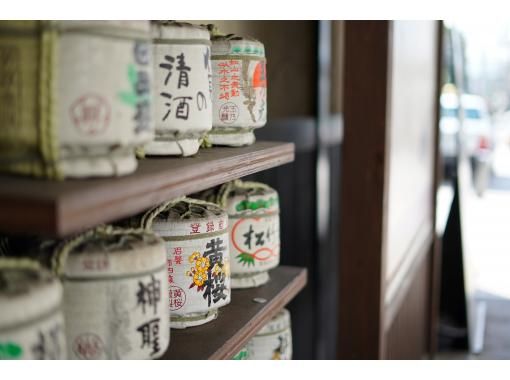
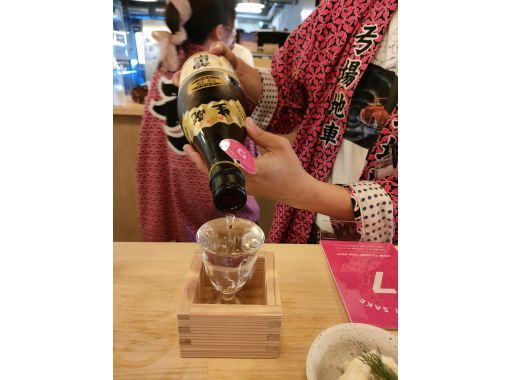
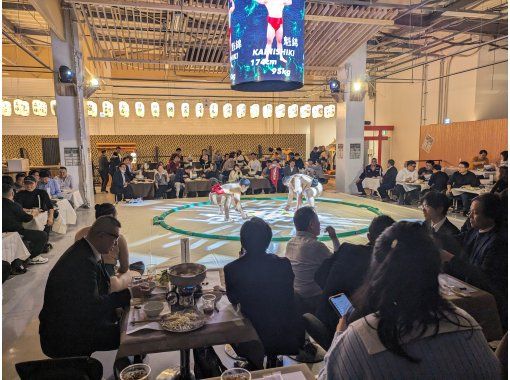
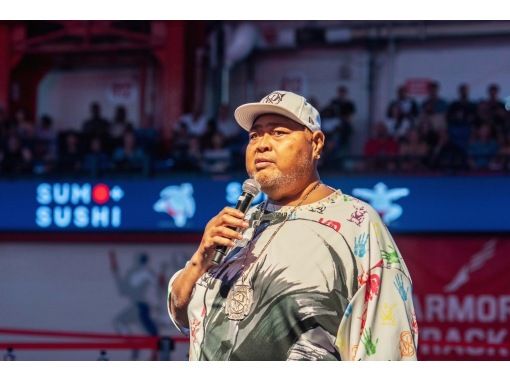
![[Osaka/Tamatsukuri] Osaka no Jin "Hinomoto's No. 1 Soldier" pilgrimage tour guide (Tamatsukuri area)の画像](https://img.activityjapan.com/10/52625/10000005262501_xEnFGyJR_3.jpg?version=1706264164)
![[Osaka/Tennoji] Osaka no Jin "Hinomoto's No. 1 Soldier" pilgrimage tour guide (Tennoji area)の画像](https://img.activityjapan.com/10/52569/10000005256901_xEnFGyJR_3.jpg?version=1706258885)
![[Osaka/Osaka Castle] Pilgrimage tour guide to the sacred sites of famous castles that mark the history of prosperity and turmoil among the people of Japan (Osaka Castle area)の画像](https://img.activityjapan.com/10/52567/10000005256701_xEnFGyJR_3.jpg?version=1706257265)
![[Wakayama/Shirahama] An experience where you can meet nature and history! A sea cave exploration tour that spreads 36 meters underground! !の画像](https://img.activityjapan.com/10/46749/10000004674901_1vsuVU1u_3.jpg?version=1676097908)
